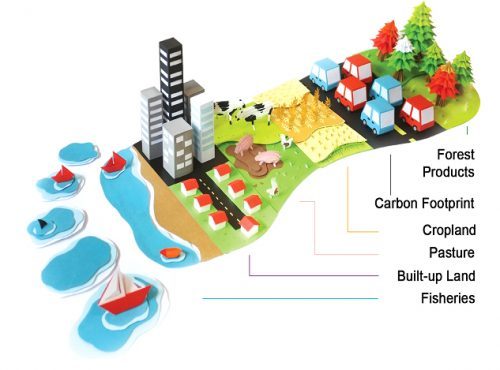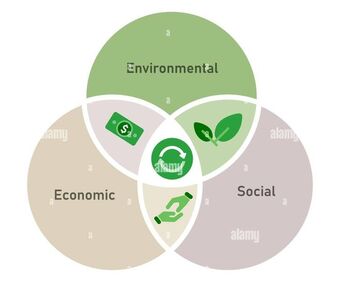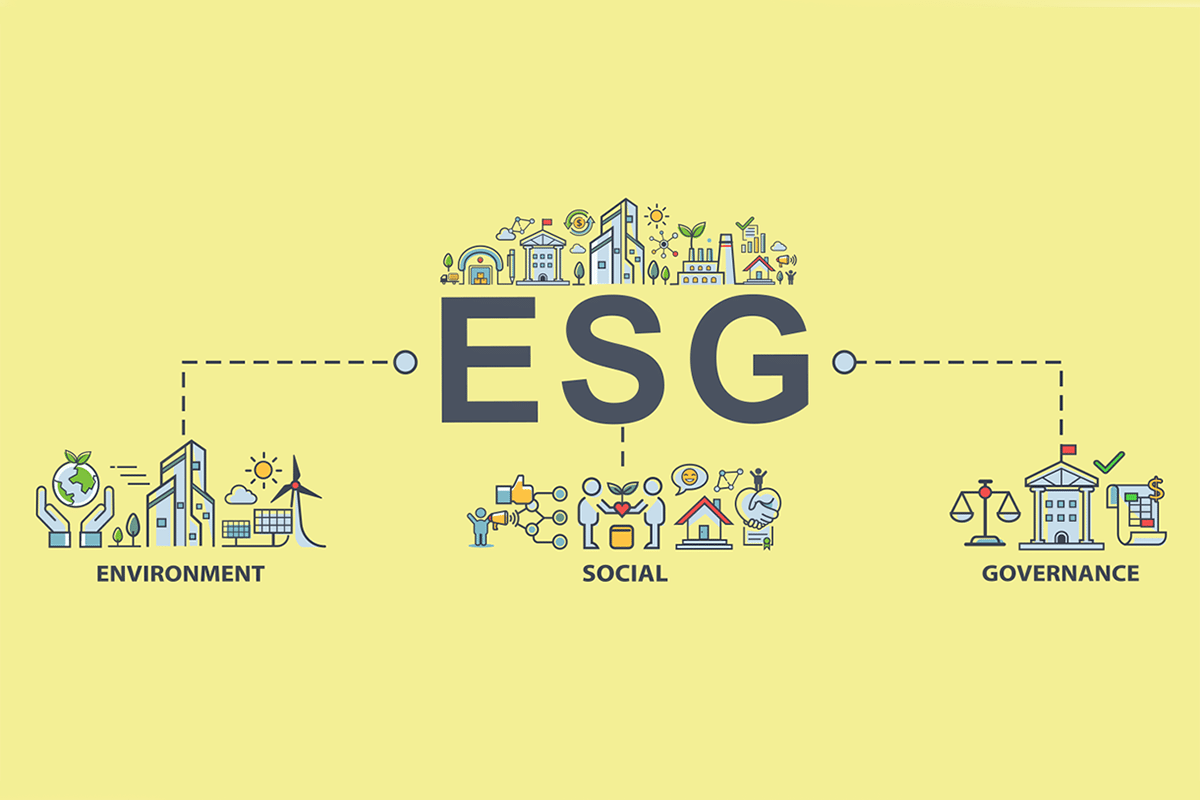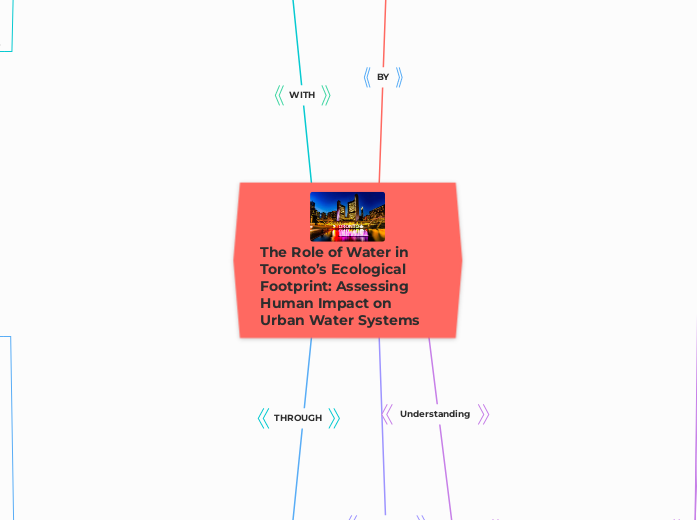The Role of Water in Toronto’s Ecological Footprint: Assessing Human Impact on Urban Water Systems
Ecological Footprint Concepts
Measurement Units
Cubic meters (m^3)
- Standard unit of measurement for water use
- Represents freshwater consumption per capita

Earth Equivalents
- Number of Earths required to keep Toronto's water demand
- Highlights overuse of freshwater resources

Biocapacity
- Watershed's capacity to produce resources in Toronto
- Absorption of pollutants through natural filtration
The Greenhouse Effect is responsible for trapping heat in the Earth's atmosphere, leading to rising global temperatures (Lecture 3, Slide 3).
Greenhouse gases such as CO₂, CH₄, and N₂O contribute to this effect by absorbing infrared radiation (Lecture 3, Slide 4).
These gases accumulate in the atmosphere and prevent heat from escaping, creating a warming effect (Lecture 3, Slide 5).
Historical Development
Introduction by William Rees and Mathis Wackernagel
- Early 1990s
- Origin of the ecological footprint applied to water
Concept Evolution
- Adaptation for water sustainability assessments
- Recognition as a key tool in hydrological resource management
Application
- Policy development in Toronto for sustainable water use
- integration into education
- Public awareness campaigns in the Greater Toronto Area
Biocapacity Comparison
Ecological Deficits
- Toronto's water demand exceeds natural replenishment rates
- overextraction of ground water and surface water
- increased stress on Lake Ontario and surrounding watersbeds
- Unsustainable practices
Ecological Reserves
- Conservation initiatives to protect water resources
- Resource surplus
- Urban projects for stormwater management
- Sustainable urban resource management
Regenerative Capacity
- Toronto’s efforts to restore warer sources
- Wetland restoration projecs
- Green infrastructure for stormwater absorption
- Urban Environmental health
Implications
- Long-term sustainability planning for Toronto's water systems
- Policy development to reduce water footprint
- comparisons with other Canadian cities
- Achieving balance in urban water use in Toronto
Conceptual Framework

Ecological Footprint Calculation
- Water Footprint in Toronto
- Residential, commercial and industrial consumption
- Wastewater treatment capacity
- Effects on Lake ontario
Biocapacity Comparison
Ecological Deficits in Toronto (demand exceeds capacity)
Ecological Reserves (Urban areas with green initiatives)
Regenerative Capacity (renewal of urban green spaces)
Environmental Balance (Toronto's sustainability measure)
Framework Application
Policy Development (informed water managementdecision-making)
Sustainability Assessments (measuring Toronto urban water impact)
Public Awareness (educational on water conservation)
Resource Management (optimization strategies for water use Toronto)

Key Principles
Interconnectedness (human and ecological systems in Toronto)
Sustainability (long-term viability of Toronto)
Equity (fair resource distribution across Toronto neighbourhoods)
Conservation (protection of Toronto's natural resources) (Bernier, Lecture 4, Slide 9)
Human Impact on Ecosystems
Resource Consumption
Renewable Water Resources
- Rainwater harvesting in urban areas
- Groundwater recharge in Toronto
- Municipal water recycling initiatives
- Stormwater capture for non-potable use
Overexploitation
- Overuse of municipal water supply
- Industrial pollution in water bodies
- Declining groundwater levels
- Strain on water treatment infrastructure
Water Depletion
- Increased demand leading to lower water tables
- Pollution reducing available clean water
- Impact of climate change on precipitation and water supply
- Seasonal drought conditions in Toronto
Feedback Mechanisms in the Climate System
Climate feedbacks amplify or mitigate temperature changes (Lecture 3, Slide 9).
Examples of positive feedbacks include ice-albedo feedback and increased water vapor in the atmosphere (Lecture 3, Slide 10).
Negative feedbacks, such as increased cloud cover, may counteract warming to some extent (Lecture 3, Slide 11).
Biodiversity Loss
Invasive Species
- Zebra Mussels in Lake Onrario
- Non-native aquatic plants affecting local ecosystems
- Disruption of native fish populations
- Competition between native and introduced species
Climate Change
- Altered precipitation patterns affecting water levels
- Increased frequency of droughts and floods
- Temperature rise affecting aquatic habitats
- Changes in fish migration patterns
Overharvesting
- Overfishing in Toronto's waterwats
- Water withdrawal for industrial processes
- Excessive agricultural irrigation
- Groundwater depletion from unsustainable use
Habitat Destruction
Deforestation
- Logging in Toronto's ravines
- Slash-and-Burn practices in peri-urban areas
- Urban Expansion displacing habitats
- Infrastructure Development affecting biodiversity

Urbanization
- Land Use change within Toronto
- Habitat Fragmentation by highways and developments
- Urban Sprawl into surrounding ecosystems
- Pollution Sources impacting Toronto neighbourhoods
Agriculture Expansion
- Urban Monoculture farming practices
- Use of Pesticides and Herbicides in community gardens
- Land Conversion for urban agriculture
- Soil Erosion in Toronto's farming areas

Infrastructure Development
- Roads and Highways fragmenting ecosystems
- Dams and Reservoirs impacting local waterways
- Industrial Zones in Toronto's outskirts
- Urban Development pressures on green spaces
pollution
Air Pollution
- Emissions from Toronto Factories
- Vehicle Exhaust contributing to smog
- Industrial Processes within the city
- Burning Fossil Fuels for heating and transport
Water Pollution
- Industrial Discharge into Lake Ontario
- Agricultural Runoff from surrounding areas
- Plastic Waste in Toronto's waterways
- Oil Spills impacting urban water bodies
Soil Pollution
- Chemical Contaminants in Toronto's brownfields
- Heavy Metals in industrial areas
- Pesticides used in urban agriculture
- Waste Disposal challenges in the city
Energy Use and Environmental Implications
Forms of Energy
Nuclear Energy
- Uranium sourced for Ontario’s nuclear plants
- Nuclear Reactors in nearby regions
- Waste Management affecting Toronto
- Safety Concerns for urban proximity
Biomass Energy
- Organic Materials from Toronto's waste
- Biofuels production in the GTA
- Urban Sustainability of biomass use
- Carbon Neutrality goals in Toronto
Energy Dependency in Industrial Societies
Historical Trends
- Industrial growth of Toronto
- Post-Industrial energy consumption
- Renewable energy transitions in Toronto
- Patterns of energy use in Toronto (Bernier, Lecture 4, Slide 12)
Economic Impacts
- Cost of Energy in Toronto
- Local Economic Growth from energy sectors
- Urban Energy Markets
- Job Creation through green energy projects
Environmental Impacts of Energy Use

Acid Rain
- Sulfur Dioxide impacts from Toronto industries
-Nitrogen Oxides from urban emissions
- Environmental Effects on Toronto ecosystems
- Health Impacts on residents

Oil Spills
- Marine Pollution in Lake Ontario
- Ecosystem Damage near Toronto's ports
- Cleanup Efforts in urban waterways
- Long-term Effects on Toronto's biodiversity
Response of the Climate System
The climate system responds to increased greenhouse gas concentrations with shifts in weather patterns (Lecture 3, Slide 15).
In Canada, precipitation levels are expected to increase in some regions and decrease in others (Lecture 3, Slide 16).
Extreme weather events such as floods and droughts will become more severe (Lecture 3, Slide 17).
Energy Efficiency and Conservation
Incentives
- Tax Breaks for Toronto residents
- Subsidies for green energy projects
- Grants for community energy initiatives
- Rebates for energy-efficient appliances
Technological Innovations
- Smart Grids for Toronto's power
- Energy Storage solutions
- Efficient Appliances for urban households
- Renewable Integration in Toronto's grid
Sustainability and Solutions
Reducing Water Consumption
Community Initiatives
- Public campaings for water conservation
- Green roofs and permeable pavement objects
- Community-led watershed restoration
- Environmental Workshops in the GTA
Water-Saving Techniques
- Low-flow appliances and fixtures
- Smart irrigation systems in urban landscaping
- Leak detection and repair programs
- Water reuse and recycling innovations
Impacts on the Water Cycle
Climate change is altering global precipitation patterns (Lecture 3, Slide 12).
Some regions are experiencing increased drought frequency, while others face heightened flood risks (Lecture 3, Slide 13).
Changes in soil moisture levels affect agriculture and freshwater availability (Lecture 3, Slide 14).
Minimizing Waste
Recycling Programs
- Greywater recycling for urban use
- Wastewater treatment imporvements
- Stormwater management strategies
Zero Waste Movement
- Reducing Single-Use Plastics in Toronto
- Bulk Buying initiatives in the GTA
- Waste-Free Lifestyles promoted locally
- Zero Waste Stores in Toronto neighbourhoods
Sustainable Practices
Public Transportation
- Reduction of vehicle emissions that contribute to acid rain
- Increased reliance on green transportation solutions like the TTC
Sustainable Agriculture
- Reduction of chemical fertilizers and pesticides
- Promotion of permaculture and organic farming near water bodies
- Agroforestry practices in urban parks
Policy Measures and Government Role
Environmental Legislation
- Clean water Act application in Toronto
- Protection policies for Lake Ontario
- Industrial wastewater regulations
- Climate resilience plans for Toronto's urban water systems

Subsidies for Green Technology
- Renewable Energy Incentives in Toronto
- Water conservation grants for businesses
- Municipal investment in stormwater management projects
- Funding for water-efficient infrastructure
Global and Local Responses
International Agreements
Paris Agreement
- Climate Targets aligned for Toronto's water sustainabilits
- Global Cooperation influencing local policy
- Emission Reduction Goals within the city to reduce impact on Toronto's water systems
- National Commitments reflected in Toronto

UN Sustainable Development Goals
- Urban resilience to climate-related water challenges
-Clean water access for all Toronto residents
- Global Partnerships benefiting local actions
- Progress Tracking in Toronto
National and Local Policies
Community-Based Programs
- Water conservation workshops
- Community Gardens within urban areas
- Restoration of urban watersheds
- Pollution prevention initiatives
Conservation Laws
- Wetland Protected Areas in and around Toronto
- Endangered Species Acts for urban regions
- Policies limiting industrial water use
- Urban planning regulations to preserce green infrastructure
Corporate Social Responsibility

Sustainable Business Practices
- Corporate initiatives to reduce water waste
- Water efficient production processes
- Supply Chain Management within the GTA
- Corporate Sustainability Reports highlighting Toronto
Green Certifications
- LEED Certification in Toronto for water-efficient buildings
- ISO 14001 certifications for businesses meeting environmental management standards
- Energy Star products in Urban Homes
- Fair Trade Certifications promoted in the city
Societal and Economic Impacts
Water scarcity may disrupt economic activities and agricultural production (Lecture 3, Slide 18).
Urban areas will need to adapt to changing precipitation patterns and rising sea levels (Lecture 3, Slide 19).
Global industries, including semiconductor manufacturing, are already experiencing disruptions due to climate-induced water shortages (Lecture 3, Slide 20).
Tracking Environmental Progress
Citizen Science Projects
- Public Participation in Toronto Research
- Data Collection and Monitoring of water in Urban Areas
- Educational Outreach within Toronto Schools
- Community Science Initiatives for watershed protection

Annual Reports
- Toronto’s municipal water conservation progress reports
- Corporate Sustainability Reports based in the city
- NGO Environmental Assessments of Toronto's efforts
- International comparisons of urban water sustainability
Projections of Future Temperatures
Climate models predict a range of future temperatures based on emission scenarios (Lecture 3, Slide 6).
High-emission scenarios project significant temperature increases, while low-emission scenarios predict more moderate warming (Lecture 3, Slide 7).
Rising global temperatures are expected to impact ecosystems and human societies (Lecture 3, Slide 8).
